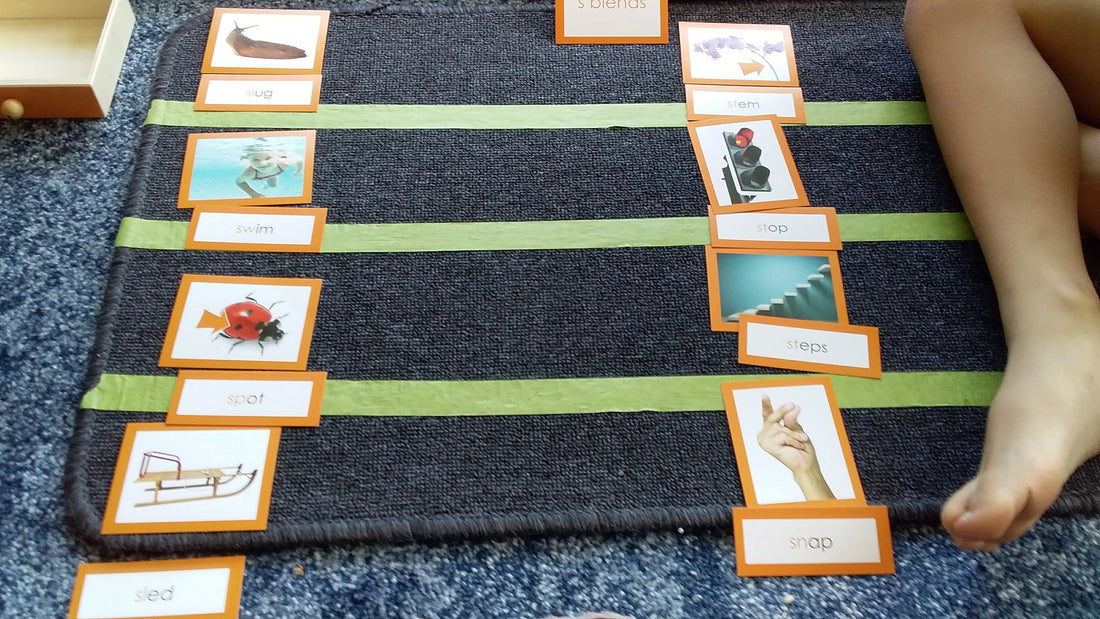I have always loved the Montessori pink, blue and green series. Last year I used the free Blue Series from here to help teach my class reading. As much as I wanted to integrate comprehensive phonetic systematic reading I didn’t have the resources or time to do it!
After seeing more and more children with reading difficulties, I knew I needed to invest in a series which systematically taught phonics. This included teaching blends, digraphs and other spelling patterns that we don’t cover in the traditional Montessori sequence. A post on Instagram piked my interest and I came across the reading programme from Waseca (you can purchase your own here, this link gives you and me a small reward if you buy).
This year I’ve been able to use their reading programme, which comes with these beautfiul draws, to help a child I am tutoring. The child has diagnosed severe dyslexia and even after a phonics intervention at school is still struggling on breaking the reading and writing code.
I have been aware for sometime that a hands on systematic approach is vital to help children with reading difficulties (in fact it helps all children!) and was delighted to have the time and resources to work through such an approach with them. Interestingly there are many different types of phonics approaches so it is helpful to know how a systematic approach differs from reading a book and occasionally pointing out digraphs, blends or certain spelling patterns.
I did some initial assessment using a pseudoword test and found that the child needed work with blends. I looked at my Waseca reading programme booklet and found that the orange series of words was the perfect place to start the child.
This is how our most recent lesson progressed!
First I introduced the blends we were going to cover. Each blend was written on its own sticky note.

I said the blend and then the child wrote it in flour in a baking tray. The child then repeated the sound. We continued with the other blends.
I then introduced the Montessori style Waseca cards. I showed each picture, said the word and then said the blend. All of the cards had blends we had just done with flour in the baking tray.

I then gave the child the individual word cards and they placed the individual word card under the relevant picture. Each word is totally phonetic so the child was able to read them by themselves which is a great self esteem boost for a child who often feels like reading is too hard!


We then wrote the words with the Montessori moveable alphabet.


At the end we packed up the words using a game approach, this game helped cement the child’s phonetic knowledge and letter (shape) recognition. I asked the child to give me all the /a/ (saying the sound not the letter name), give me all the /s/ etc.

The child was really excited to do the work and said “Mum needs to get me this for home.” Perhaps the most exciting thing for me was when the child said “Ooh, all of these words start with a sssss." This shows that the systematic approach really helped.
At the very end the child used voice to text (an app on google) to dictate some sentences which had the "s" blends in them.
If you are interested in more articles or information about why phonics is a great way to learn you may find these articles helpful:
8 Multisensory Techniques for Reading
You may also be interested in my other language blog posts
The Montessori Language Programme For 6-12 Year Olds
How Miniature Environments Develop Language
Pin this for later here:

